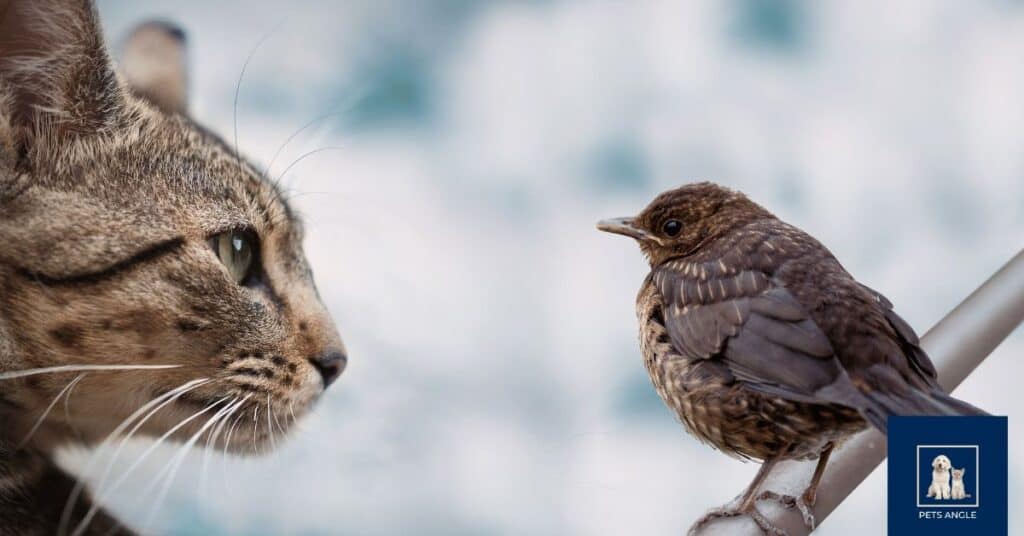Domestic cats are vital contributors to species extinction, including environmental destruction, climate variability, and inefficient food cultivation, which is why they are classified as invasive species.
Because felines are bred from wild cats, they often have hunting impulses. Unfortunately, we have looked away from the problem for a long time. Our bias is due to our affection for our cute feline companions.
Wild cats and our household pets have been dubbed one of the planet’s most destructive species; due to the dangers posed to the existence of other animals in eco-diversity.
Negative Sides of Domestic Cats’ Activities
Invasive species like cats cause substantial economic losses and can impair human health by competing with local species, transferring illnesses, or eliminating native species outright. We never saw it that way because of selfish affection for the pets.
Invasive species’ consequences are growing as people’s surroundings become increasingly fragmented.
The number of bird death from cat activities far outweigh the number of bird death from human-related urbanization endeavours.
Cats inhibit species in many ways than merely hunting them, aside from the death and life disruption they create. They leave odors in the environment that deter other creatures from rearing their offspring or finding sustenance in that location.
Attacks from cats eliminate the environmental functions these wild animals provide, such as seed dispersal, insect control, plant pollination, and food sources for other wildlife.
Why Are Domestic Cats Invasive Species?
1. Competition: Domestic cats fight for small food with other creatures like birds. While stray felines constitute the greatest threat, even well-cared-for and fed house cats still attack and kill if allowed outside.
2. Disease spreading: cats transmit infections such as rabies, feline leukemia, and other illnesses to native animals. In a report, cats alone exceeded half of the household pets with rabies transferable to humans and animals.
3. Breeding Effect: Mating house cats with wild cats causes the genetic pool to alter. Cats, therefore, multiply in the population at a very fast pace.
Cat population rise is evident in the data that posited that of household cats population in the United States has jumped by 300% within the last four decades. While an exact count of stray cats is difficult, estimates imply that community cats in the neighborhoods are not less than 30 million. Both indoor cats and stray ones collectively pose a threat.
4. Disruptive or terror impacts: a study found that placing a ceramic feline close to a bird’s nest momentarily reduced future eating of the offspring by 30%. This Implies that cats are threats to some creatures that also help balance biodiversity.
Remedies to Invasive Effects of Domestic Cats on Biodiversity
Domesticated cats can cause harm to local wildlife, but there are some easy and efficient treatments.
Even though some flaws have been observed in the recommended solutions, that does not justify the continued disruption of the ecosystem by this feline family:
- Cat population management can be achieved by spaying or neutering pets. Spaying entails sterilizing the cats to prevent them from reproducing, but it does not address many of the other negative consequences outlined above.
- Restraining cat movement indoors prevents them from marauding birds in the neighborhood and other small creatures. There is a limitation to this method because cats do not require much space to move around. Keeping cats indoors offers the extra benefit of preventing infections, being hit by a car, being attacked by a coyote, and other risks of roaming free.
- Assist in spreading the word and raising awareness about the necessity of maintaining indoor cats. Advocacy to retrain cats should be given attention as animal protection.
- Cat-proof fencing is another suggested solution to cat invasion. It can help protect small regions inhabited by endangered native animals, but it is also costly, impracticable on a large scale, and has a high risk of neglect.
- Provide bells, brightly colored bibs, and other accessories to cats – Adult birds and animals may be alerted to the presence of a cat by these, but they are less effective on newborn birds and mammals.
- Changes to the rules on invasive alien species: Most laws prohibit the introduction, control, or elimination of exotic species that pose a hazard to ecosystems, habitats, or other species.
Furthermore, various animal rights movements obstruct the proper control of the damages caused by these cats’ behavior.
Failure of the government to accept domestic cats as a problem and cat owners’ reluctance to restrict their pet movement impedes the necessary reforms required to address the issues posed by domestic cats.
When the damage wreaked by the house cats is brought open for debate, the first response is always harsh disposition, aggressiveness, scorn, and outright disdain.
- The trap-neuter-return (TNR) program is strictly enforced. The procedure is straightforward: cats captured by the volunteers are examined by vets, immunized, spayed, and released to their natural habitats.
Overall, addressing the problem of free-ranging cats has become a must. As a cat parent, I need to balance the welfare of my felines against the lives of others to attain a collective societal benefit.

